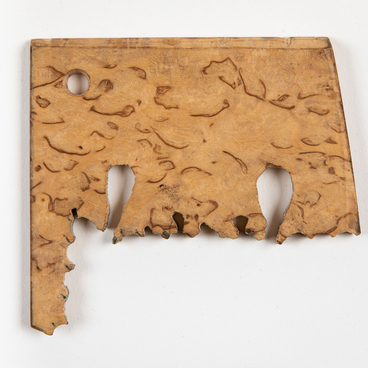The collection of the Sheltozero Veps Ethnographic Museum named after Rurik Petrovich Lonin features a children’s chair, donated to the museum in 1978 by Maria Fyodorovna Guseva, a resident of the village of Sheltozero. It is known that she got the chair from the Mugachev family. In Veps villages, there was a tradition to give away the belongings of grown-up children to a family that needed them. Probably, the children’s chair presented in the collection passed from one family to another several times.
Maria Fyodorovna Guseva (Kyarginskaya) had several grandchildren. These were the children of her daughter Anna Petrovna Lunina (Karginskaya): Sergey, Anatoly, Victor. Anna Petrovna was the wife of Rurik Petrovich Lonin, a famous local historian and founder of the Veps Museum.
The handmade chair was made in one of the Veps villages. Thick pine roots were used in the manufacture of the legs. The legs of the chair have a stable shape; thin elegantly interweaving pine roots form the back of the chair and two armrests. The seat for a child is made of a round-shaped piece of plywood. Unfortunately, the name of the master is yet unknown, but a similar children’s chair was found in the village of Ishanino.
Sitting at the common table, the child adopted traditions, learned rules and customs. For example, the owner of the house was the first to take the spoon, and only then other family members could join him. Until the mid-1930s, the Veps lived mainly in large families, the head of which was the oldest man — father or grandfather. The women looked after all the cattle except the horses, were engaged in cooking, sewing clothes, and weaving. When a girl got married, she received a dowry from her parents: utensils, clothes, fabrics, and cattle. The widow had the right to return the dowry. If she did not have children, she could earn money for the years she lived in her husband’s family.
The northern Veps were often engaged in seasonal work, as a result of which a
woman often played the main role in the family. In the Russian Empire,
temporary, seasonal work of peasants outside their place of permanent residence
was called “othodnichestvo”. Seasonal work was a significant source of income
for the peasant population.


